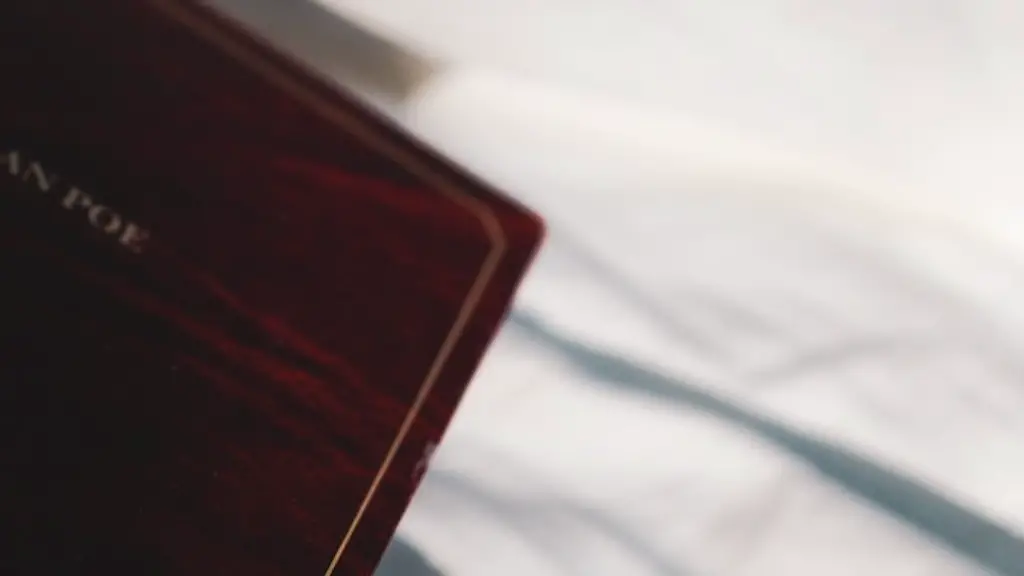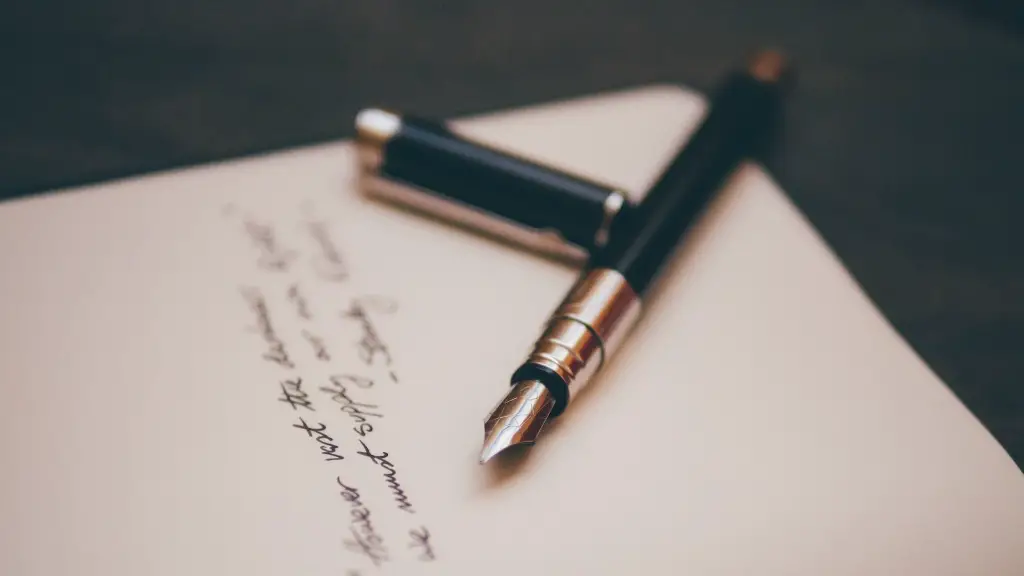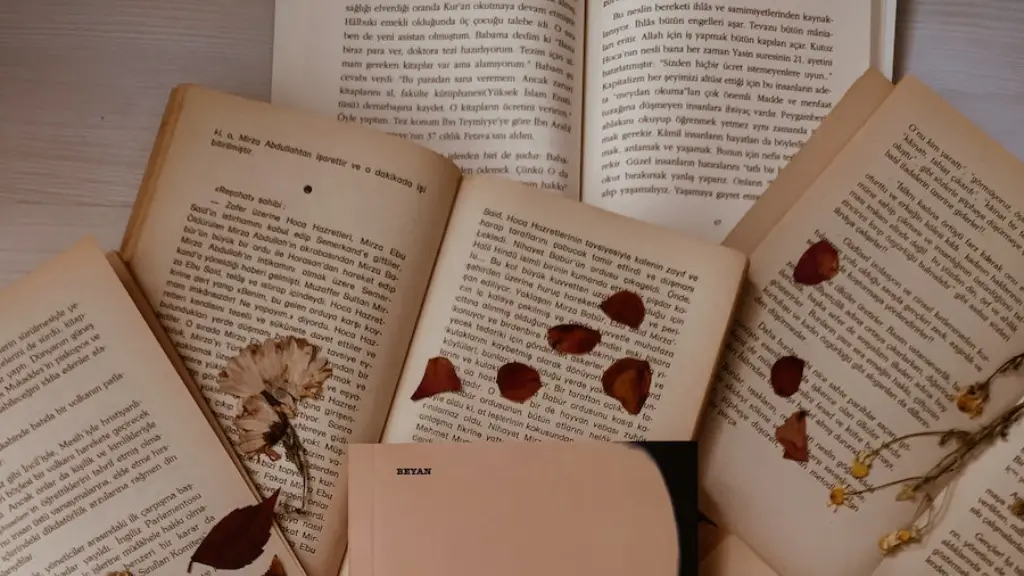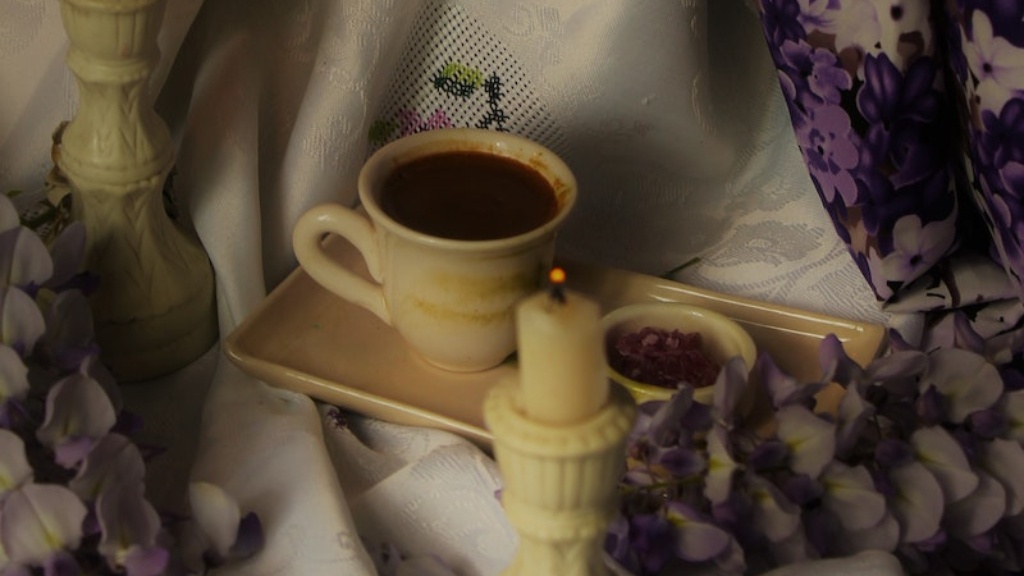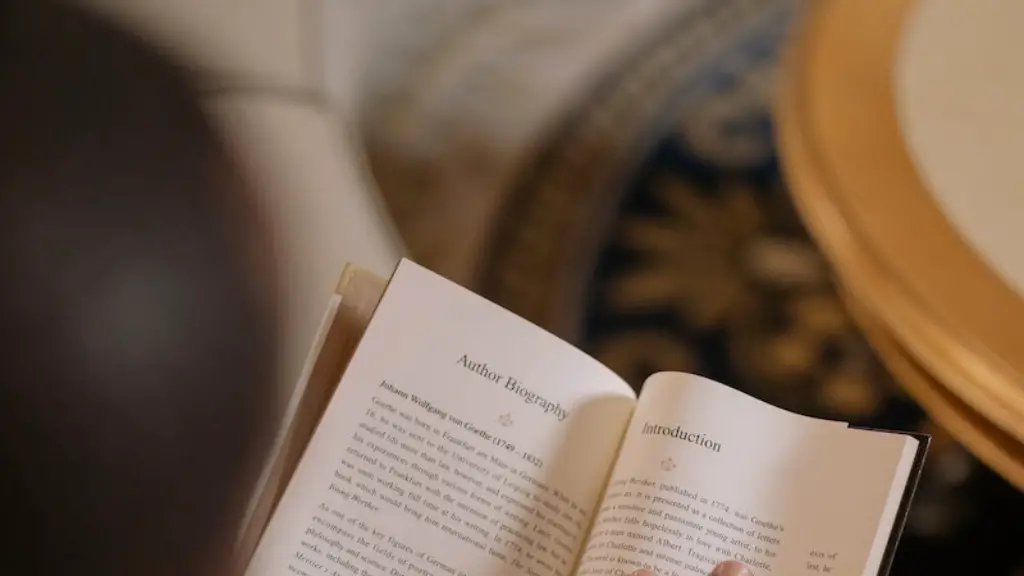In poetry, a ballad is a type of narrative style poem with a simple meter and rhyme scheme. This popular form of poetry has been around since the middle ages, with multiple authors and ‘balladeers’ reciting the same or similar stories with different interpretations. Ballads have typically been used to tell stories of love, romance, tragedy and loss, with the language often having a melodic and repetitive tone.
A ballad usually follows a traditional plot structure such as “The Hero” or “The Villain”. It is often set in a storyline from myths, legends and fantasy. Containing a mix of dialogue, narrative and description, ballads in poetry typically focus on a single main event or feeling, which is deliberately expressed in a touching, powerful way. Some popular examples of ballad poetry include “The Rime of the Ancient Mariner” by Samuel Taylor Coleridge and “The Ballad of Reading Gaol” by Oscar Wilde.
When writing a ballad, it is important to remember that ballad poetry has its own special rules. A ballad usually has four-line stanzas with each line being eight syllables and possessing a specific rhyme pattern specific to the poem. It also regularly has a refrain (or chorus) which is repeated throughout the poem, often after each stanza. This refrain can help to keep the overall story unified and engaging while also highlighting the specific feelings or emotions the poet is trying to portray.
Experts agree that ballads are a great way to express emotion if done right. According to Poet Gregory Pardlo, “The ballad can absorb the emotional reality of a situation and embody it as an offering back to the world.” When working on a ballad poem, it is important to remember that the dramatic emotion of the poem is carried in the words and meter, not just simple word choice. Ballad poets traditionally use more figurative language like similes and metaphors to create an enchanting atmosphere, which can be a challenge for many poets.
Furthermore, ballad poetry should always include plenty of visual imagery. By creating a vivid mental image for the reader, the poem should become more exciting and engaging. Lastly, a ballad should be focused on the speaker’s overall perspective and feelings. This appeals to readers and invites them to connect with the story easily. Overall, writing a ballad should be done thoughtfully and with care to really capture the feelings of the moment and evoke emotion from the reader.
Adding Metaphors
Using metaphors is a crucial element of writing a successful ballad poem. According to poet Brian Spears, “Metaphors offer practitioners a way to focus their ideas by connecting the universal with the personal.” Metaphors are a way for the poet to express an emotion without directly saying it. Instead of the poet saying that they are sad, they can describe the emotion with a metaphor such as “my heart is a wilting flower”. This expression of emotion through creative language can be especially effective in a ballad poem.
Including metaphors in a poem can also help create vivid images in the reader’s mind. This can be especially powerful when used in a ballad. By describing the same sentiment with different metaphors throughout the poem, the ballad can leave a lasting impression on the reader and create an instant connection between the poet and the audience.
Finally, metaphors can help to create themes and rhythms in a ballad. By including metaphors that relate to each other, a poet can create an overall theme for the poem and present it in a more appealing way. For example, a poet might write about the sadness of love loss with metaphors of rain, storms and dark skies. These images can help to create a strong underlying theme in the ballad that the reader can connect to.
Using Refrains
The use of refrains can help to unite the ideas within a ballad poem. Refrains are often repeated throughout the poem and can help to tie together the events and emotions of the poem. Refrains can create a sense of continuity that makes the poem more engaging and easier to follow.
In addition, refrains can help to emphasize the main points of the poem and add an element of suspense. A good refrain can be repeated often enough to pique the reader’s interest while still being subtle enough to not take away from the poem’s main story.
Finally, refrains can also be used to create a sense of nostalgia in a ballad. By repeating a phrase from the poem’s beginning at the end of the poem, the readers can be taken back to the beginning of the story and left with a strong sense of closure.
Telling an Effective Story
A ballad poem should tell a story that is engaging and exciting for the reader. When constructing the story, it is important to create an interesting narrative with a clear beginning, middle and end. This narrative should also be focused on a particular emotion or experience that can be highlighted throughout the poem.
While writing the story, it is important to include vivid descriptions and visual imagery to create an exciting and powerful story. This will help to make the poem more engaging and provoke emotion in the reader. It is also important to create a believable story with well-developed characters that the reader can sympathize with.
It is also important to remember that the story in the ballad should be related to the feelings of the poem. By making the story revolve around the emotions of the poem, the poem can become more meaningful and touching. This will help to create a deep connection between the poet and the reader.
Creating a Flow
The language used in a ballad poem should flow naturally and create a sense of rhythm for the reader. This can be achieved by using express words and common language to create a flow that is easy to follow. This will enable the reader to quickly and easily understand the story and emotions in the poem.
In addition, by including recurring language, such as refrains, a poet can create a strong flow in the poem that moves the story along without seeming awkward. This will help to keep the reader engaged and ensure that the poem is effective and powerful.
Finally, it is important to create a balance between the flow and the emotions of the poem. By using flowing language that is still descriptive of the poem’s feelings, the poem will become more powerful and engaging. This will help to create an instant connection between the poet and the reader.
Incorporating Imagery
Incorporating imagery into a ballad poem is essential for creating a captivating story. By utilizing vivid descriptions and powerful visuals, a poet can create the perfect setting for their story. This will help to make the poem more interesting and engaging.
In addition, imagery can help to create more vivid characters and scenes in the poem. By describing the characters’ physical characteristics and the environment they are in, the reader will be able to easily understand the poem and the emotions of the characters. This will also help to evoke strong emotions in the reader and ensure that the poem is powerful and meaningful.
Finally, imagery can help to make themes in the poem more apparent. By creating vivid images that evoke powerful emotions, a poet can easily convey the core themes of the poem. This will help to make the poem more memorable and impactful.
